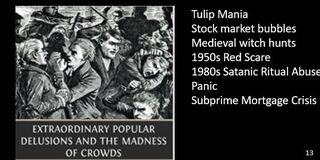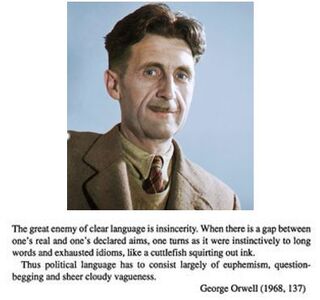Bias
12 Reasons to Be Skeptical of Common Claims About Implicit Bias
Limitations in implicit bias research aren't always communicated to the public.
Posted March 28, 2022 Reviewed by Devon Frye
Key points
- There is no consensually-agreed upon definition of implicit bias. This makes communicating about implicit bias quite difficult.
- The Implicit Association Test (IAT) is the most common method for measuring implicit bias. Yet it has several flaws and limitations.
- Those limitations, which are well-known among psychological scientists, are rarely acknowledged to the wider public, including students.
Implicit bias is in the air. Hillary Clinton famously declared that "implicit bias is a problem for everyone." When she was California Attorney General, now-Vice President Kamala Harris expanded implicit bias trainings for police and has attributed many things to implicit biases on her Twitter feed.
Given widespread distress over unconscious racism, many consulting firms now provide implicit bias trainings and assure you that they deliver. A simple Google search for "consultant, implicit bias training" yields pages and pages of hits. Is this kind of corporate response to the problem of implicit bias justified?

In a 2018 essay, West Virginia University sociologist Jason Manning argued that "unconscious racism" bears a resemblance to older superstitions about the evil eye and sympathetic magic—but rather than mysterious unseen supernatural forces, we have mysterious unseen unconscious forces. There are, of course, some differences between beliefs in the evil eye and unconscious racism. There is no evidence that people can harm you by looking at you, whereas there is a wealth of studies on implicit social cognition. But I argue that the comparison may still be justified because the evidence for unconscious racism is so weak.
A moral panic occurs when some substantial portion of a society creates a "folk devil"—members of the community considered deviant and dangerous—and exaggerates the dangers they pose. In one research report, for example, people massively overestimated the number of unarmed Black people killed by police in 2019, with more than half of all liberals surveyed estimating the number at 1,000 or more (when data indicated it was more likely to be around 27). And many people have been denounced or socially ostracized for opposing things like affirmative action and diversity, equity, and inclusion programs, even though the majority of Americans, including majorities of Black and Hispanic respondents, oppose basing college admissions or hiring on ethnicity or race.
Others have been denounced or publicly shamed for a maladroit compliment of a supermodel or for sharing a peer reviewed sociology article, if doing so is viewed as deviant behavior or contrary to widely-held views. I personally have witnessed a talk in which a Jewish professor was publicly called a "grotesque Nazi" by physics professors for having described Obama as "half-black" (he has a Kenyan father and a White American mother). Such responses can be seen as evidence of a moral panic and the creation of "folk devils" surrounding the topic of racism.
Returning, however, to the implicit bias consulting firms—it's possible to find powerful testaments to the effectiveness of their trainings. But what does the science actually say—not just about the trainings, but about implicit bias more generally?
The workhorse method for assessing implicit bias is the Implicit Association Test (IAT). You can take several of these here to see what they are like for yourself. But before you do, you should consider these reasons to be skeptical about any claims about implicit bias.
1. The peer-reviewed scientific literature has witnessed a great walking back of many of the most dramatic claims made on the basis of the IAT and about implicit social cognition more generally.
Several researchers in this domain have put together this repository of over 40 articles (and growing) identifying flaws, artifacts, limitations, and threats to the validity of the IAT. Here are the titles of just a few of those articles:
- "More Error than Attitude in Implicit Association Tests"
- "Unconscious Racism: A Concept in Pursuit of a Measure"
- "Implicit? What Do You Mean? A Comprehensive Review of the Delusive Implicitness Construct in Attitude Research"
In fairness, there are still plenty of research articles that take implicit bias seriously, such as this one. The point is not that the notion has been completely debunked or the IAT shown to be completely worthless; I even do research using the IAT! Instead, the point is that most of the most dramatic claims about it have been debunked or, at least, shown to be dubious and scientifically controversial. These are not firm grounds on which to sell the public on the power and prevalence of unconscious racism or trainings to mitigate it.
2. There is no consensually-accepted scientific definition of implicit bias.
Across five articles, there might be three with different definitions and two that do not even provide a definition. No one knows what "implicit bias" even is—at least if "know" is taken to mean "a clear understanding shared by most scientists."

3. The IAT measures reaction times, not things that most people think of as bias.
Whether reaction times might be considered bias in some technical sense is beyond the scope of this essay. Reaction times are not what most people think of when they think about bias; the IAT does not directly measure racism, oppression, or unfairness. (Whether it does so indirectly with any reasonable success is controversial, as described next.) To claim reaction times constitute any sort of bias in the common understanding of the meaning of "bias" is to import a conclusion by fiat rather than evidence.
4. At best, the IAT measures the strength of association of concepts in memory.
When reaction times are faster for some pairs of concepts than others, it is possible that the two concepts for which reaction times are faster are more closely associated in memory. That's the only thing the IAT can directly show: the closeness of association of concepts in memory—not "bias," not "racism." But it goes downhill from there; a slew of statistical issues and methodological artifacts suggest that the IAT is not even a clean measure of strength of association.
5. The IAT may capture prejudice, stereotypes, or attitudes to some degree, but, if so, it is not a clean measure.
Critiques of the IAT have concluded that it contains more error than attitude or reflects actual knowledge about actual group differences and conditions; and that IAT scores reflect four separate phenomena, of which attitude is just one.
6. The IAT, as used and reported, has a potpourri of additional methodological and statistical oddities.
Although a deep dive into them is beyond the scope of this blog, the interested reader can find them laid out in gory and technical details here and in the online repository of articles.
7. Many of the studies that use IAT scores to predict behavior find little or no anti-Black discrimination specifically.
If "unconscious racism" was as powerful and pervasive as its advocates claim, one would expect some, and probably a great deal, of anti-Black discrimination in these studies. Its absence in many studies justifies significant skepticism about claims about the power or prevalence of implicit bias.
8. Whether IAT scores predict behavioral manifestations of bias beyond self-report prejudice scales is unclear, with some studies finding they do and others finding they do not.
Racial prejudice is real and is readily measured by self-report scales assessing attitudes towards various racial and ethnic groups. It is not clear that the IAT captures much beyond these self-report scales, though.
9. Procedures that change IAT scores have failed to produce changes in discriminatory behavior.
One might ask, then, the point of such procedures and why is there such enthusiasm for these trainings.

10. There is currently no clear evidence that implicit bias trainings accomplish anything other than teaching people about the research on implicit bias.
It's not that there is "no evidence." This is not a case of "absence of evidence is not evidence of absence." It is a case of "there is tons of evidence, but most of it shows little or no effect."
11. There is no evidence that IAT scores are "unconscious."
Research finds that people are quite good at predicting their IAT scores.
12. Critiques and discussions of its limitations or weaknesses are often not presented when the IAT is taught to introductory psychology students. Gambrill & Reiman, 2011, defined propaganda as “encouraging beliefs and actions with the least thought possible” (p. e19516). Does extolling research on the IAT without presenting its limitations and weaknesses constitute "encouraging beliefs and actions with the least thought possible"? I leave that to you to decide. Regardless, this omission is contrary to the aims of science.
What This All Means
Here is my advice to you: Take an IAT or two (which you can here) if you have not already, just to see what the buzz is about. But now you are armed with enough information to reject any simple-minded proclamations about unconscious racism or the supposed power of implicit biases.




